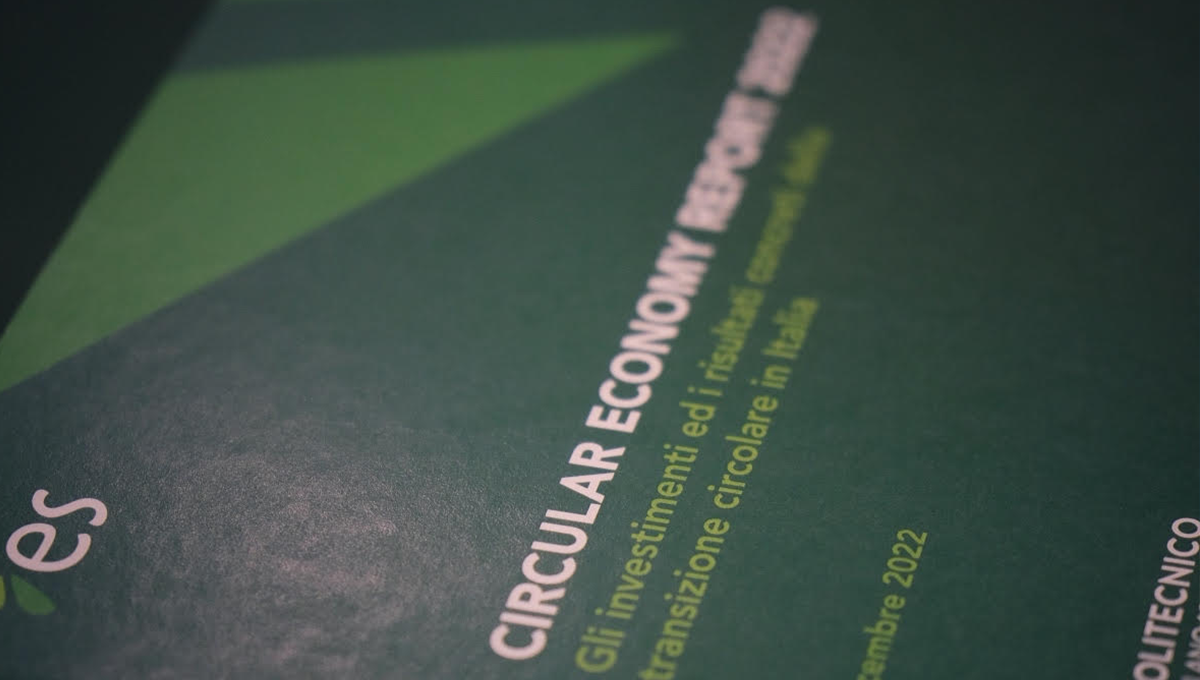
The Circular Economy Report 2022 has been published
Over 14.4 billion euros of savings were reached in Italy at the end of 2021 thanks to the adoption of circular economy managerial practices. This is the first important step towards the goal of over 100 billion euros that can be saved by 2030, thanks to the complete transition to the circular economy, and the reduction of almost 1.9 MtCO2 of emissions. The data, presented on 13 December at the Bovisa Campus of Politecnico di Milano, are contained in the 2022 edition of the Circular Economy Report, elaborated by the Energy & Strategy Observatory of Politecnico with the contribution, among others, of the Circular Economy Lab. Among other speakers, was also present at the press conference Massimiano Tellini, Global Head of Circular Economy of Intesa Sanpaolo Innovation Center, research partner.
Now in its third edition, the Circular Economy Report is an important document for understanding the main trends of the ongoing transition from the linear to the circular economy, the growth prospects of companies, regulatory developments at European, national and regional levels, the barriers and the drivers for the adoption of circular practices in seven fundamental macro-sectors for the Italian economy and, last but not least, the relationship between sustainable finance and the circular economy, with an analysis of the tools and methodologies used to evaluate investment projects in the circular economy.
Over half of companies have adopted at least one circular economy practice
In this context, the 2022 edition of the report captured a key moment in the development path of the sector: for the first time, the percentage of companies interviewed that have adopted at least one circular economy practice exceeded half of the total (57%, compared to 44% in 2021) while the percentage of companies that have made significant investments in the sector compared to their company size has grown to 61%, helped by the loans made available by the financial system - over 30 billion euros - to support this decisive transition.
Among the seven macro-sectors analyzed by the authors of the Circular Economy Report, the textile department ranks first in terms of companies that have already implemented at least one circular economy managerial practice (82% of the total), followed by food & beverage (80%), furniture and furnishings (62%), industrial plants (59%). In last place is consumer electronics (15%). The most widespread circular economy practice in our country is the recycling of components (61% of the total sample interviewed), followed by disassembly design actions (32%) and regeneration (29%).
The drivers of transformation and the main process benefits according to companies
Most of the investments made fall within the limit of 50,000 euros, while a quarter of the companies have invested between 50 and 150,000 euros and 4% of the total have invested over 500,000 euros. In 50% of cases, the payback period is less than two years. Business development needs (52% of the companies interviewed) and requests from the Board of Directors (25%) are the main drivers leading the transformation. Finally, the reduction of waste deriving from production, reduction of the environmental impact generated, and effective application of reused materials represent the main process benefits encountered by companies that have applied circular economy practices.